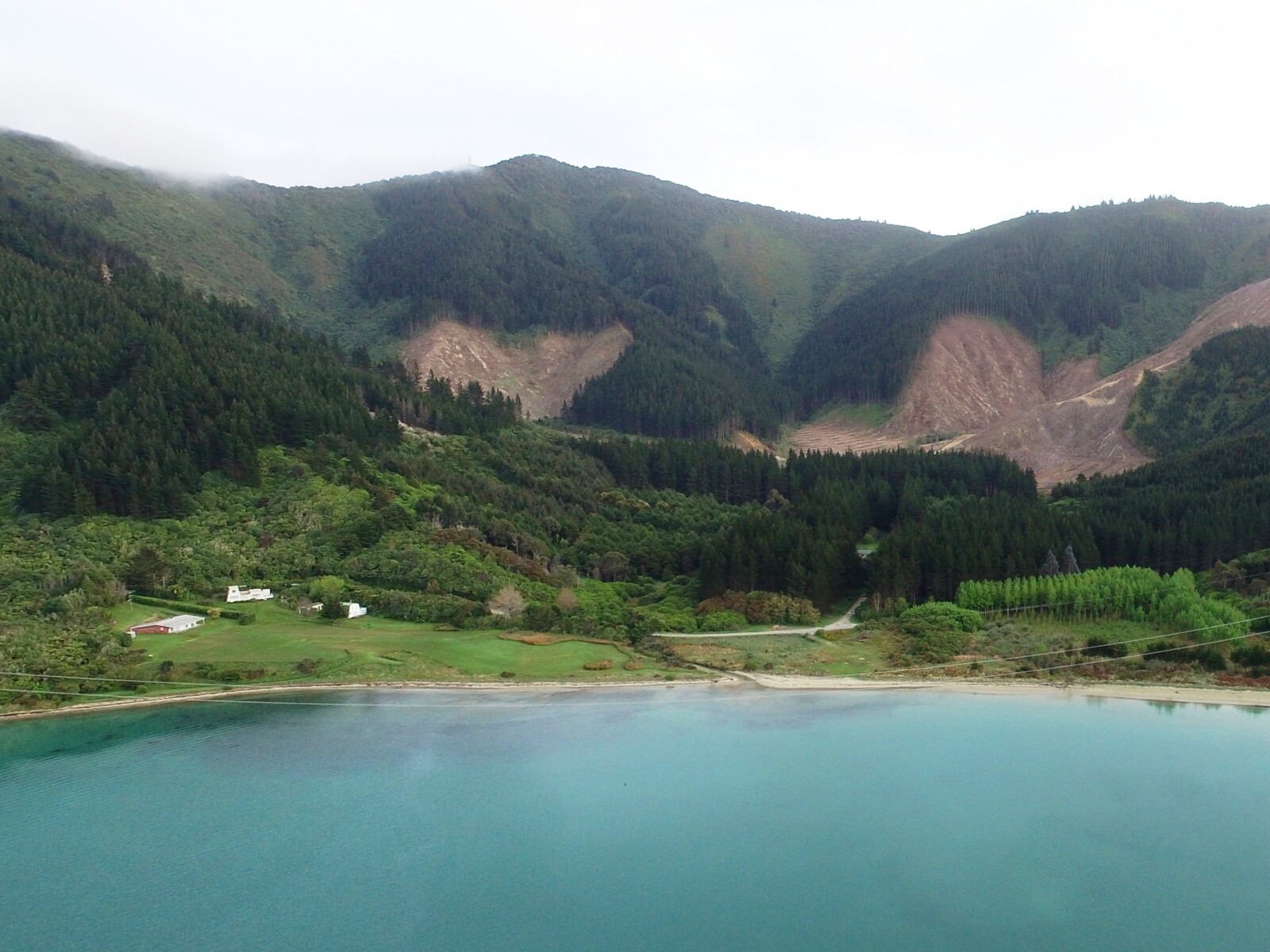The origin of the bay’s name is unknown.
Whanga means bay in Māori and taura means rope or cable.1
There is some suggestion that, Pākehā (non-Māori), knew the inlet as Tawa Bay after a stand of large trees on the hill.2
The bay has a long history of human settlement. The iwi (tribe) Ngāti Toa Rangatira, had a pā in the bay during the Nineteenth Century3 and an archaeological survey uncovered evidence that around the Fourteenth Century early Māori used the area as a location for shaping stone adzes.4
Following the arrival of Pākehā, the bay was farmed by George Baldick, who cleared the lowland forest. George married Eliza Jackson in 1860. The couple initially lived in the bay in a mud hut but after having 15 children, built a larger wooden house in middle of the bay.5
Whangataura Home of the Baldicks, Blenheim, by Arthur John McCusker. Gift of the Guard Family, 1993.
Image courtesy of Te Papa (Reference: O.003712).

In 1882 the first Port Underwood School was established in bay with 14 pupils.6
To the south of the bay is Blackball Point, so named for the hulk of the Blackball that lies offshore in the shallow sandy water. The Blackball was an ex-coal hulk, which was towed from Wellington in 1923 for river protection at Wairau. The plan was to sink the ship to provide a foundation for breastworks but instead it was left at Te Whanganui / Port Underwood as it was unable to clear the Wairau Bar.
The ship drifted around Te Whanganui / Port Underwood on an inadequate anchor and eventually grounded on the point. Kauri planks and iron from the hulk were salvaged before ship was burnt. Some evidence of the ship remains.7
1. “Whanga”, Te Aka Māori Dictionary, accessed, May, 14, 2019, https://maoridictionary.co.nz/search?idiom=&phrase=&proverb=&loan=&histLoanWords=&keywords=whanga
2. James R. Eyles, Place Names of Port Underwood - a post European History, (Picton: October Enterprises, 2002) 25.
3. Ngati Toa Rangitira and Toa Rangitira Trust and the Crown, “Deed of Settlement of Historical Claims, 2012”, accessed March 3, 2022,
https://www.govt.nz/assets/Documents/OTS/Ngati-Toa-Rangatira/Ngati-Toa-Rangatira-Deed-of-Settlement-7-Dec-2012.pdf
4. Michael M Trotter, Port Underwood Archaeological Survey, (Christchurch: Canterbury Museum, 1976) 6.
5. Eyles, “Place Names of Port Underwood” 25-26.
6. Loreen Brehaut, the Bays of Port Underwood, (Picton: Picton Historical Society, 2012) 10.
7. Eyles, “Place Names of Port Underwood” 23-24.




